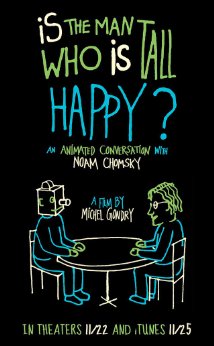
Genres: Documentary and Animation
Releasing Date: 12 February 2013 (USA)
Director: Michel Gondry
Writers: Michel Gondry
Stars: Noam Chomsky and Michel Gondry
Language: English
Two predicating conditions of Is the Man Who Is High Happy? value referring to are Michel Gondry’s entrance that he wants to catch some of Noam Chomsky’s knowledge before the determined MIT linguist’s loss of life, and that Chomsky has probably never seen one of Gondry’s movies. The filmmaker’s first-person prologue presents an natural sin of the documented format: Even to an eye as harvested as Gondry’s, a discussing go unencumbered by apparent manipulations in modifying will be obtained by the audience as being truthful. Gondry’s way around this—which isn’t to contact Chomsky into query so much as to recognize the levels of perspective needed—is to provide Chomsky’s stories and ideas in hand-drawn protoplasms, his mellifluous speech providing a base for associated with fluorescent toons as the discussion reduces and increases.
Despite Chomsky’s place as a lodestar on the remaining, he and Gondry are mostly cap to discuss politics; instead, Chomsky maintains judge on his lifestyle increasing up in Pittsburgh (his dad was a famous pupil of Hebrew), findings on information and city preparing, and on his meaning of the phrase tradition as “unarticulated, gathered information.” Gondry and Chomsky’s divergent ideas of the primary resources every person provides with them into their understanding around the globe are what keeps the discussion juiced. Sometimes the madcap auteur’s Sharpee animated graphics opinion quietly on Chomsky’s ideas, like how the Charles Stream surrounding his workplace continues to be the Charles Stream every day even if the h2o that comprises it is different at any given time. Since both men know it as the Charles Stream despite this continuous flux, Chomsky presents his idea of “psychic continuity”—how we know factors are what they are, even if they appear programmed otherwise.
When Chomsky carries on that the only way the Charles Stream can become something other than the Charles Stream is when it’s run out and introduced over, Gondry’s side gleefully removes its own boasting sources and quickly blueprints yet another smog-congested superhighway onramp in its position. Choosing Chomsky’s mind, Gondry’s carefully designed personality as a bumbling Frenchman isn’t merely self-effacing, because it needs Chomsky to processor his concepts down to primary illustrations like these—enabling a jazz-like fluidity that creates the movie the other of a session. The two don’t agree (and the graphics can slyly, cutely indicate a certain speaking logjam), but it’s never on concepts or policies—rather, on the top quality or the high top quality of their digressions.
When Gondry requests Chomsky about his very first storage, Chomsky chuckles remembering his three-year-old self declining to eat his oatmeal; the display is filled one range at some point with the looped picture of a sprightly doodled little boy in suspenders shifting a group up and down in his face, an picture that creates itself just as quickly as it smashes apart and morphs into a new plan. Chomsky delivers Gondry “back to the illustrating board” more than once, but the director’s awareness about developing the speaks to match his animated graphics supports, again, that this isn’t expected to be a documented. Falling further into their speaks, Gondry shows his potential for movement of subjects both lively and serious, like Chomsky’s memories of pro-Nazi Irish immigrant areas in his child years community or commonalities between Judaism refugees removed in Globe War II and the itinerant Roma areas in Italy.

